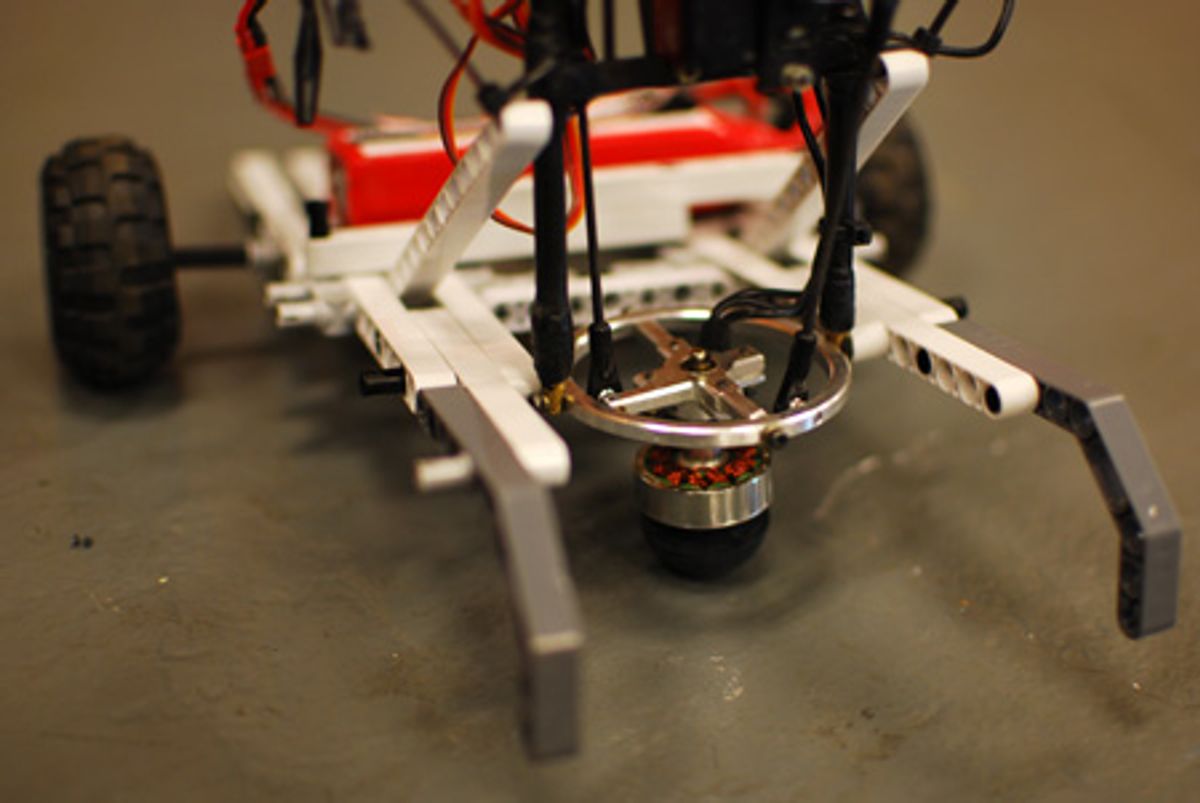What you're looking here is a hemispherical omnidirectional gimbaled wheel, or HOG wheel. It's nothing more than a black rubber hemisphere that rotates like a spinning top, with servos that can tilt it left and right and forwards and backwards. Powered by this simple drive system, the robot that it's attached to can scoot around the floor in ways that I would have to characterize as "alarmingly fast."
Before I go on about the design, have a look at just what this thing is capable of. Its creator, Curtis Boirum, a grad student at Bradley University, in Peoria, Ill., demoed it at the 2011 RoboGames symposium:
Just to reiterate, a HOG wheel is simply a rubber hemisphere that spins on its axis very, very fast. When the hemisphere is vertical, it's just like a spinning top, but by tilting the hemisphere so that one of its sides makes contact with the ground, you can vector torque in any direction near-instantaneously, depending on which side of the hemisphere you use.
So for example, if the hemisphere is spinning clockwise, tilting it so that the right side contacts the ground will "pull" the robot forward, with the amount of torque directly proportional to the tilt of the hemisphere, like an infinite gear ratio without any gears. It's very simple, very efficient, and as you can see from the video, the drive system is capable of delivering more torque than any of the poor robots that it's attached to can reliably handle.
This idea has actually been around for decades: a concept illustration of a car with a HOG drive graced the cover of the 1938 edition of Mechanics and Handicraft Magazine. Nothing much has really been done with it since, but Curtis (who actually re-invented the system from scratch) is hoping to create a cheap, powerful, and agile omnidirectional drive system that can be adapted for use by both researchers and hobbyists. We hope he'll build a car-sized version too.
Update: This is now being called a "Singularity Drive System," in reference to the zero gear ratio transition point, which is a mathematical singularity.
[ Bradley University ]
Evan Ackerman is a senior editor at IEEE Spectrum. Since 2007, he has written over 6,000 articles on robotics and technology. He has a degree in Martian geology and is excellent at playing bagpipes.




